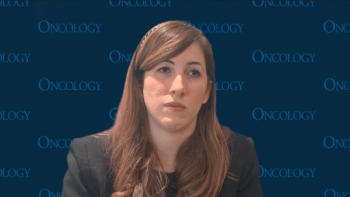
Study Highlights Disparities in Genetic Testing in Ovarian and Breast Cancer
A study of genetic testing in ovarian and breast cancer patients found substantial disparities in testing rates for ovarian cancer patients.
A study of genetic testing in ovarian and breast cancer patients found substantial disparities in testing rates based on race and insurance status for ovarian cancer patients, highlighting areas that need improvement. The prevalence of actionable pathogenic variants found by the testing ranged from 8% to 15%.
Previous work has suggested that the use of multiple-gene sequencing panels may increase the prevalence of actionable variants. “Almost nothing is known about the prevalence of pathogenic variants on multiple-gene panels among clinically tested, population-based patients with breast cancer and patients with ovarian cancer,” wrote study authors led by
The investigators established the Georgia-California Surveillance, Epidemiology, and End Results (SEER) Genetic Testing Linkage Initiative using SEER data from those two states and the four laboratories that conducted nearly all cancer susceptibility testing. They analyzed testing rates and results from a cohort of 77,085 patients with breast cancer, and 6,001 patients with ovarian cancer, diagnosed between 2013 and 2014. The results were
Among the ovarian cancer patients, 30.9% had testing results from any of the 4 laboratories; among the breast cancer cohort, the rate of testing was 24.1%. The testing rates were similar across the two states, and did not vary substantially over the course of the study period.
Among patients with ovarian cancer, the rate of testing was highest in the group of patients who were age 40 to 59 years (39.7%); for breast cancer, testing decreased with increasing age at diagnosis, with 72.1% of those age 20 to 29 years undergoing testing compared with only 3.9% of those age 80 years or older.
The study found “considerable variation” in testing rates based on race/ethnicity among ovarian cancer patients (though not among breast cancer patients). Non-Hispanic white patients had a testing rate of 33.8%, compared with 21.6% for black patients and 24.9% for Hispanic patients. Married patients were more likely to be tested (37.4%) than single patients (27.0%), and those with Medicaid were less likely to be tested (20.3%) than those with other insurance (33.9%).
For all genes that current guidelines specify as associated with the given cancer type, 7.8% of those with breast cancer and 14.5% of those with ovarian cancer had an actionable variant. The most common such variants for ovarian cancer patients included BRCA1 (8.7%), BRCA2 (5.8%), CHEK2 (1.4%), BRIP1 (0.9%), MSH2 (0.8%), and ATM (0.6%). For breast cancer, the most common variants included BRCA1 (3.2%), BRCA2 (3.1%), and CHEK2 (1.6%).
“Although it is possible that universal testing guidelines might reduce disparities, our results demonstrate the challenges of adhering to such inclusive guidelines in the case of ovarian cancer,” the authors wrote. “More research is needed to identify optimal approaches to genetic testing delivery and results management and determine the impact of the rapidly changing landscape of genetic risk evaluation on patients with cancer and their families.”
Newsletter
Stay up to date on recent advances in the multidisciplinary approach to cancer.



















































































